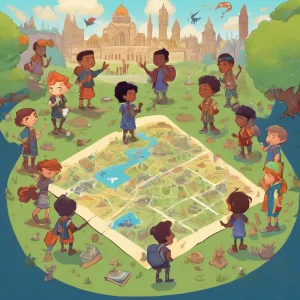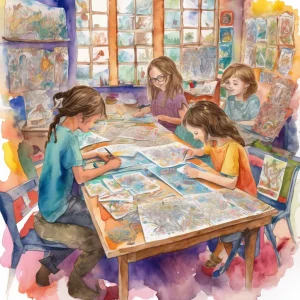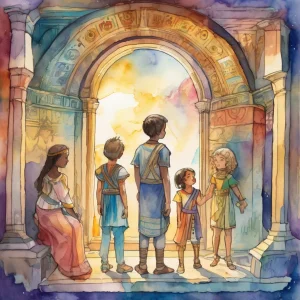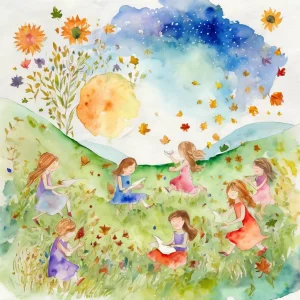Activity
Similar Activities
Musical Straw Pan Flute Symphony Adventure
Children’s Age: 6–9 years
Activity Duration: 10 minutes
Create a homemade pan flute using plastic straws to explore music and physics concepts.
Activity Duration: 10 minutes
Digital Beats and Hoop Dreams Coding Adventure
Children’s Age: 9–12 years
Activity Duration: 10 – 20 minutes
An engaging coding activity integrating music production, basketball skills, and teamwork for children aged 9-12 years.
Activity Duration: 10 – 20 minutes
The Global Treasure Hunt: Cultural Adventure Quest
Children’s Age: 9–11 years
Activity Duration: 10 – 30 minutes
Get ready for an exciting Global Treasure Hunt adventure! You'll explore different countries, solve clues, and work together in teams. All you need is a map, some clues, and a sens…
Activity Duration: 10 – 30 minutes
Eco-Tech Dance Party: Nature's Rhythms and Tech
Children’s Age: 6–10 years
Activity Duration: 25 minutes
The "Eco-Tech Dance Party" activity merges technology, dance, and eco-awareness for an engaging experience. Ideal for children, this activity promotes moral growth, language develo…
Activity Duration: 25 minutes
Around the World Postcard Adventure: Global Tales
Children’s Age: 3–6 years
Activity Duration: 20 minutes
Embark on the "Around the World Postcard Adventure" to explore diverse countries and cultures through creative writing and art! Gather postcards, art supplies, and books about diff…
Activity Duration: 20 minutes
Cultural Photo Exploration: World Wonders Journey
Children’s Age: 6–10 years
Activity Duration: 20 minutes
Embark on the "Cultural Photo Exploration" activity to boost children's play skills, cultural awareness, and academic development through an outdoor photography journey. Choose a d…
Activity Duration: 20 minutes
Enchanted Time Travel Storytelling Adventure
Children’s Age: 10–12 years
Activity Duration: 25 – 35 minutes
Embark on the "Time Travel Storytelling Adventure" to spark ecological awareness and historical curiosity through imaginative play. Create a cozy storytelling setting with cushions…
Activity Duration: 25 – 35 minutes
Whispers of Nature: Eco-Puzzle Challenge
Children’s Age: 8–12 years
Activity Duration: 20 minutes
The "Eco-Puzzle Challenge" activity is a fun and educational way to promote empathy, play skills, and ecological awareness in children aged 8 to 12. Children work in small teams to…
Activity Duration: 20 minutes
The Eco-Innovators Theater Play: Imagining Ecological Tales
Children’s Age: 6–10 years
Activity Duration: 15 – 30 minutes
The Eco-Innovators Theater Play activity is perfect for children aged 6 to 10 to explore ecological awareness creatively. No materials are required for this indoor play. Children c…
Activity Duration: 15 – 30 minutes
Holiday Storytime Craft: Festive Tales and Creations
Children’s Age: 5–18 years
Activity Duration: 30 – 40 minutes
Let's have a fun and educational time with the "Holiday Storytime Craft" activity! We will read a holiday-themed storybook with cultural elements and then get creative with craftin…
Activity Duration: 30 – 40 minutes
Picnic Adventure: Pretend Cooking Play for Toddlers
Children’s Age: 2–3 years
Activity Duration: 10 – 30 minutes
An imaginative activity where children (ages 2-3) engage in pretend cooking during a picnic adventure.
Activity Duration: 10 – 30 minutes
Whispers of the Seasons: Seasonal Collage Exploration
Children’s Age: 5–6 years
Activity Duration: 10 minutes
Engaging activity where children create collages representing different seasons.
Activity Duration: 10 minutes



























